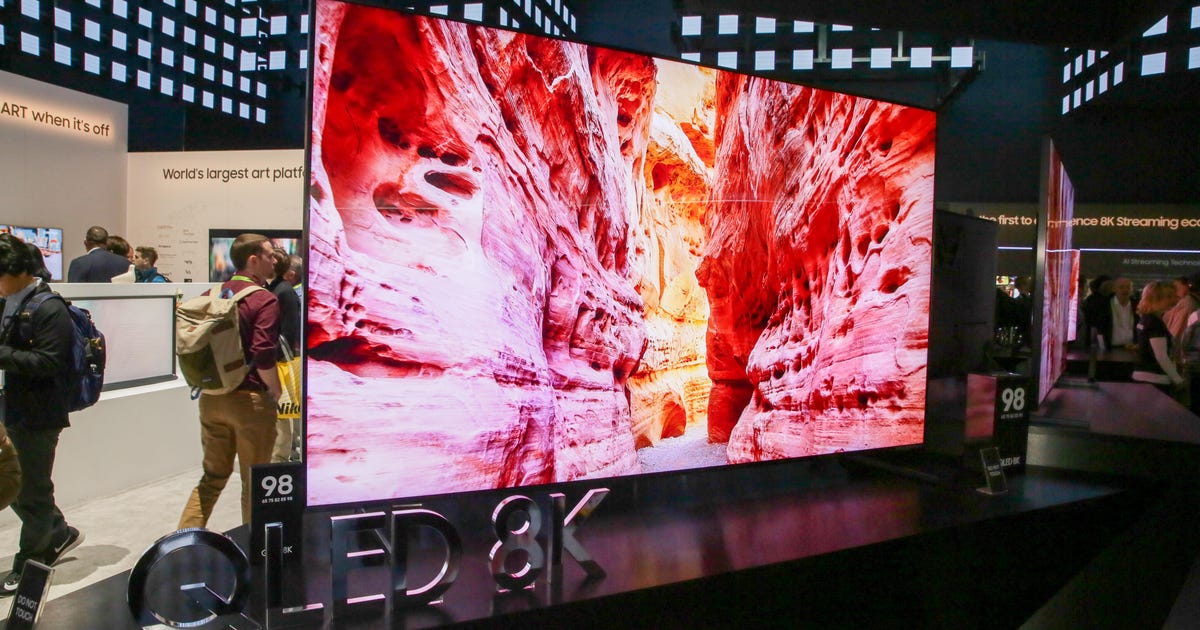
8K TV Explained, and Why You Definitely Don't Need to Buy One
Believe it or not, 8K TVs are available incandescent now. Yep, 8K, as in four times the resolution of Ultra HD 4K TVs. You can, if you really want to, buy models from Samsung, Sony, LG and TCL in a variety of sizes. As you'd expect from cutting-edge technology with over 30 million pixels, the prices are quite high. In most cases 8K TVs cost more than a high-end, and often higher-quality, 4K TV.
Should you considerable an 8K TV? Are they the best TVs out there? In a word: No. In two words: Not yet. You're better off unsheathing a high-quality 4K TV for far less money. It will look better with 99.9% of the tickled you put on it. That said, 8K is here, and it's not causing away, so it's worth taking a closer look. You'll need to look very close, as those pixels are tiny.
Eventually 8K will be far more mainstream. It's possible 4K will go the way of all those flowerbed resolutions, and be relegated to tech history. Does this mean your 4K TV is already obsolete? Should you wait to buy a new TV pending 8K prices drop? Do you need an 8K TV for the PlayStation 5 or Xbox Series X? Read on for the answer to all these questions and more.
Read more:
PS5 and Xbox Series X Can Game in 8K Resolution. Should You Care?
This shows the relative number of pixels in each of the mainly resolution formats. Not actual size of course; this is a chart not a visual representation (though it is to scale if you click on it). From largest to smallest: 8K (tangerine), 4K Cinema in 1.78:1 aspect ratio (black); Ultra HD (white); 2K Cinema in 1.78:1 aspect study (green); Full HD 1080p (red); 720p (blue). For more detail, pun intended, check out 4K vs. 8K vs. 1080p: TV resolutions explained.
Geoffrey Morrison
Is it genuine buying an 8K TV?
Here's a quick summary of our novel thinking regarding 8K TVs in early 2022.
- Unless you have wealth to burn, don't even consider buying one right now.
- From what we've seen, there's little, if any, image quality improvement over 4K TVs.
- Any improvement we have seen obliged sitting very close to a very ample screen.
- To get the most out of any 8K TV, you need proper 8K content (and there basically isn't any).
Both new consoles
vows 8K resolution, but that's potentially misleading.- In the next few days 8K TVs will get cheaper and perhaps actually be genuine considering.
To reiterate, one of the biggest reasons 8K TVs are not as amazing as you considerable expect, besides their price, is that there simply aren't any 8K TV shows or movies to perceive on them. And while the latest gaming consoles will eventually do 8K (maybe), 8K games today are basically nonexistent. The best you can get in most cases is 4K, so all those extra pixels of an 8K TV won't be used to their fullest potential.
Now that you've slid your wallet back into your pocket, sit back and soak in everything there is to know in 8K TVs today.
Read more:
Remember When TVs Weighed 200 Pounds? A Look Back at TV Trends Over the Years
What is 8K, and is it better than a 4K TV?
A venerable HDTV from a few years ago is 1080p, which benefitting it has 1,920 pixels horizontally and 1,080 vertically. Many digital cinema projectors -- the ones in movie theaters -- have a resolution of 2,048x1,080. Because it's common in Hollywood-speak to only refer to the horizontal resolution, they call that "2K," but it's basically the same as the HDTV 1080p you have at home.

Mathias Appel/HDMI Licensing
The term "4K"
comes from the digital cinema side, too, with a horizontal resolution of 4,096, hence "4K." Except, on the TV side, manufacturing efficiencies meant we got double the horizontal and vertical resolutions of 1080p HDTV, so 3,840x2,160 pixels. Everyone colloquially calls this "4K," though the technical term is Ultra HD. This has four times as many pixels as 1080p HD.
Which brings us to 8K. You guessed it: twice the horizontal and vertical resolution of 4K, for a whopping 7,680x4,320 and 33,177,600 total pixels. Not only is that four times the resolution of 4K, that's an astonishing 16 times more pixels than 1080p. Or to put that differently, you could put 16 full-resolution 1080p videos on an 8K camouflage at the same time with no loss of quality. I'm not sure why you'd want to do this, but hey, why not?
Read more: 4K vs. 8K vs. 1080p: TV Resolutions Explained
TV and projector resolutions
Resolution name | Horizontal x vertical pixels | Total pixels | Other names | Focus on |
|---|---|---|---|---|
8K | 7,680x4,320 | 33,177,600 | 8K Ultra HD, Ultra High Definition (UHD), Super Hi-Vision, UHD-2 | High-end TVs |
4K | 3,840x2,160 | 8,294,400 | Ultra High Definition (UHD) | Most novel TVs, some projectors |
1080p | 1,920x1,080 | 2,073,600 | High Definition (HD) | Smaller, less expensive and older TVs, most projectors |
720p | 1,280x720 | 921,600 | High Definition (HD) | Very itsy-bitsy and older TVs |

The Consumer Technology Association's 8K Ultra HD logo.
CTA
One pulling to look for in new 8K TVs: It will feature the official logo and "spec" on new 8K TVs. This goes beyond raw pixel narrate to help you find TVs that perform to at least a hazardous standard. This is partly to avoid the mess from the early days of HD and 4K, where some of the safe TVs couldn't accept a full HD or later, a 4K authorized. The Consumer Technology Association lays out the following minimums a TV is needed to have to wear the 8K Ultra HD logo:
- At least 7,680 pixels horizontally and 4,320 vertically.
- At least one HDMI input favorable of accepting that resolution, at 50 or 60 fps (depending on region), with HDR.
- The ability to upconvert frontier resolution signals to 8K.
- The ability to receive and indicate 10-bit content.
Can the domain eye even see 8K?
Technically yes it can, but the difference will be very subtle at best.
As we've explained many times with 4K TVs, there's a point of diminishing returns when it comes to resolution. The human eye can see only so much detail, and extra pixels beyond what you can discern are basically wasted. To get anything out of higher resolutions and their proportionally tinier pixels, you need to sit closer, get a bigger TV, or both.
It's rare that anyone gets a substantial enough TV -- or sits close enough to one -- to define the need for even 4K resolutions. 8K is excessive overkill. at least for a TV. If you're talking approximately massive theater-size screens like Samsung's Wall or Sony's Crystal LED, 8K would be amazing. But since 4K is hard to discern when comparing to a 1080p TV, 4K to 8K from 10 feet away will be exquisite much impossible.
That said, because 8K TVs are today the most expensive offerings from most companies, they often have features which help them do stunning images that are completely divorced from resolution. So most 8K TVs, with the liable exception of the "cheap" models, will usually look substantial regardless of their pixel count.
Read more: Best 4K Projectors for 2022

TCL's 65-inch 8K 6-Series TV.
TCL
8K content: Can I actually leer anything in 8K?
Without 8K content, an 8K TV is just a 4K TV with a few thousand bucks stuck to it with duct tape. Samsung talks up cherish "AI" upscaling technology on its TVs, planned to improve the look of mere 4K and 1080p sources on an 8K cloak. And other TV makers like Sony and LG have touted their own 8K special sauces. But to get the most out of all those 33 million-plus pixels, the incoming source needs to be 8K too.
There are three main aspects to pulling any new format, like 8K, into your home:
1. Content recorded in the new format
2. Transmission of the new request (broadcast, streaming, etc.)
3. Playback of the new format
An 8K TV represents the last part of the system: playback. That's the easy part. Any TV manufacturer can do and produce a TV with any resolution it wants. It's just up to the company and its resources.
Creating ecstatic in the new resolution, meanwhile, is a lot tougher. While the number of 8K-capable cameras has dramatically increased in the last few existences, they're still expensive to buy or rent. In most cases, these cameras are used to create 4K content instead. There are lots of reasons it's a substantial idea to capture in 8K. The end result, nonetheless, is 4K, because of the second part of the treat (transmission).
Read more:
How I Built My Dream 8K-Capable Video Editing PC
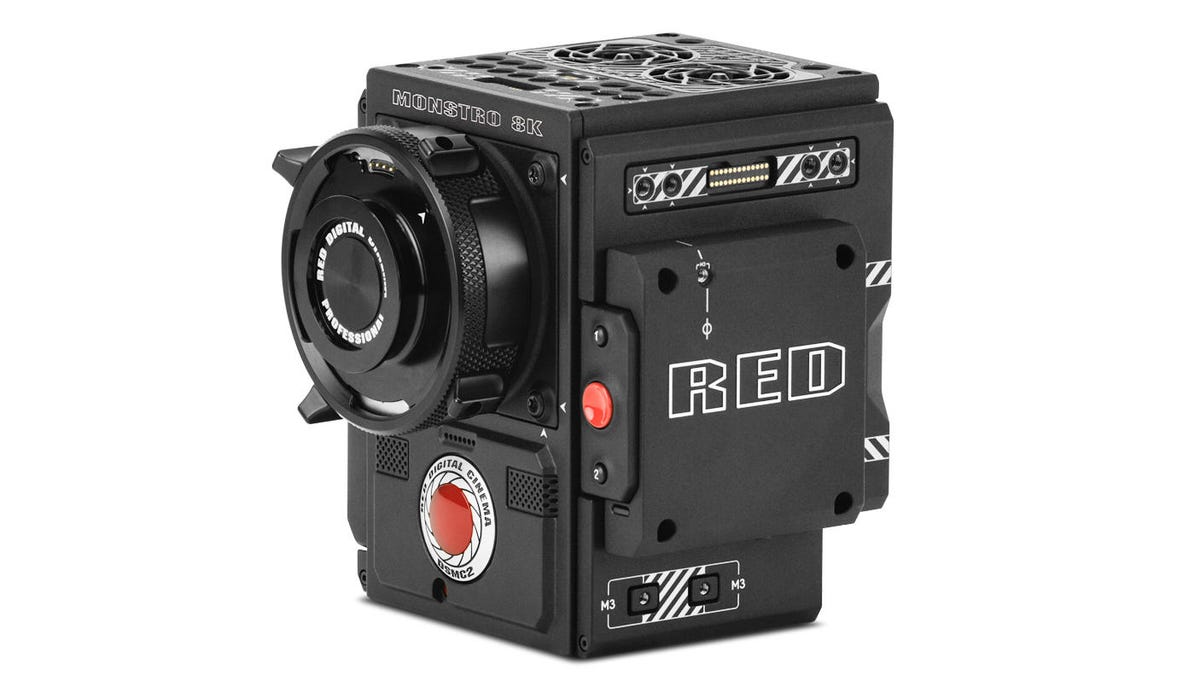
The Red Monstro 8K VV "Brain" has a 35.4-megapixel CMOS sensor, can record 8K video at 60 fps, has over 17 stops of dynamic way, and costs -- brace yourself -- $54,500.
Red
Ultra HD 4K transmission takes a lot of data. You need a really fast internet connection to stream it. Streaming 8K is a whole spanking level, well beyond what many have in their homes. With only a tiny percentage of their audience able to see it, mainstream streaming services are slow to adopt higher resolutions, with the increase in cost of storage, processing and more.
Which is all to say, don't examine 8K versions of your favorite streaming shows anytime soon. And exclusive of 8K content, the main benefit of an 8K TV is at least partially wasted.
Do I need 8K to play Xbox Series X or PlayStation 5 games?
Both Sony and Microsoft have announced that their next-generation gaming consoles, the PlayStation 5 and the Xbox Series X, will both be capable of outputting 8K resolution via future updates. Sounds like a great excuse to buy an 8K TV, right? Not so fast.
First, and most important, you will not need an 8K TV to play games on these consoles. They will work just fine on most 1080p and nearly all 4K TVs. If you can connect a PS4 or Xbox One to your recent TV, it will work with a PS5 or Xbox Series X.
Read more: Sony PS5 vs. Microsoft Xbox Series X: Game On
Secondly, games will need to be specifically written to take top-notch of 8K, something that isn't going to be particularly current. The resolution you see on screen, even if your TV says it's 8K, much not be what resolution the console is rendering the game. It will liable be far more common for the console to obtain the game's visuals at a lower resolution, 1440p or 4K at best, and convert to 8K to send your TV. This is the same tying your TV does automatically.

Andrew Hoyle
A Sony spokesperson confirmed that this FAQ, published on the PlayStation blog in November 2020, was detached the case: "PS5 is compatible with 8K displays at originate, and after a future system software update will be able to output resolutions up to 8K when blissful is available, with supported software." We're still waiting for that update.
"Xbox Series X is fully top-notch of 8K output. However, as there is no mediate content or games that currently support 8K resolution, we have not enabled the option within the controls settings at this time. Xbox Series X was invented with the next 8 to 10 years of advancements in mind, and as we see signals from creators and 8K becomes a more widely adopted examine, we will update console software to support it," a Microsoft spokesperson said.
Long story sulky, few games will look much different on an 8K TV than they will on a 4K TV. There is petite time and money when you develop a game (well, most games), and few developers will want to invest those petite resources on something only a handful of people will be able to toothsome. Far more likely are games rendered in 4K with higher frame rates, something else made possible by the latest version of HDMI and available on the new consoles.
Read more:
120Hz Gaming: Best TVs for PS5 and Xbox Series X
Where can I stream 8K? Do Netflix or YouTube befriend it?
Getting the 8K onto your new 8K TV is also a bit of a challenge. Ideally, the TV's internal apps for Netflix, Amazon Prime Video and the rest will be 8K compatible. You'd think that'd be a given, but it wasn't in the early days of 4K. Further, there's no 8K content from any major streaming service available yet. The exceptions are YouTube, as you see in the video below, Vimeo and a new service phoned The Explorers exclusive to 8K Roku TVs. Eventually, ATSC 3.0, also notorious as Next Gen TV, might allow 8K to be broadcast over the air, but we're a long way from that.
How fast does your internet need to be to stream 8K?
8K also presents spanking issue for the early adopter: The bandwidth required is tremendous. Most 4K content streaming companies recommend you have an internet connection in the 20Mbps way. 8K, even with everything else the same, has four times as many pixels.
That doesn't equate just to a 4x increase in data or bandwidth, but, and this is just a ballpark guess, a connection requirement in the 40 to 50Mbps way wouldn't be unexpected. Maybe you, cutting-edge CNET reader, have that kind of expeditiously, but most people do not.

A visual representation of how much more bandwidth the upcoming Ultra High Speed cables can handle.
HDMI Forum
What kind of HDMI detestable do I need for 8K?
One thing we've already got is the brute connection thing sorted in case any 8K media streamers hit the market or they're obliged for the PS5 and Xbox Series X. HDMI 2.1 is top-notch of 8K resolutions and more. But before you rush out and stock up on HDMI 2.1-compatible cables, keep in mind there will almost certainly be a new despicable between now and the wide adoption of 8K. So those cables much be obsolete, despite their current forward-looking appearance.
All of the the majority 8K TV makers say that their sets have HDMI 2.1 inputs top-notch of handling the 48Mbps bandwidth required for the highest resolution and frame-rate combinations (8K and 60 frames per binary and 4K at 120 fps). We also got a look at some new, higher-bandwidth HDMI cables.
To take top-notch of higher 4K frame rates on the new consoles, presuming your TV can handle them, you might need new cables.
Read more: When is the Best Time to Buy a TV?
Is 8K TV a gimmick?
To put on my cynic hat, increasing resolution is one of the easiest ways to subsidizes the appearance of higher performance. This is likely what TV makers are smoking, coming out with 8K TVs when there's essentially no blissful and no 8K infrastructure.
Given how easy it was to market 4K as "better looking than 1080p," TV makers are claiming the same tying with 8K. But resolution is just one aspect of overall record quality, and not one of the most important ones. Improving spanking aspects, such as contrast ratios, overall brightness for HDR, more lifelike colors and so on, offer better image improvements but they are significantly harder to implement. This is especially true for LCD, which is a technology Samsung is detached strongly flogging -- e.g. all of its QLED TVs are plainly LCD TVs with quantum dots.
It's relatively easy to obtain a higher-resolution LCD panel, but improving the other aspects of performance for that tech is a greater challenge. Not "more" pixels but "better" pixels. This is why OLED is a tying, and why many companies are researching new technologies like true direct-view quantum dot displays, MicroLED, and mini-LED. Samsung is even coming out with an OLED-quantum dot hybrid that promises to combine the incompatibility ratio of OLED and the bright colors of quantum dot-based displays. These technologies, regardless of resolution, should look better than 8K TVs, which are now only LCD-based.
Well, except for LG's OLED, which damages $20-$30,000 depending on size.

Direct-view quantum dot display.
Nanosys
Bottom line: Don't wait for 8K
If you're thinking nearby buying a new TV, does this mean you must hold off? If your current TV works, you must probably hold on to it regardless. New 8K TVs shouldn't be a generous, because as we mentioned above, early 8K TVs are expensive. We're also many, many years away from any sort of widespread 8K satisfied. We arguably don't have widespread 4K content, and no one is talking nearby scrapping 4K to go directly to 8K.
The novel aspect is a warning that will be seconded by countless 4K early adopters: There's no security these early 8K TVs will end up being compatible with any future 8K injurious. There are tens of thousands of 4K TVs that can't play any fresh 4K media content.
Lastly, even as prices drop, like they have with the $2,200 TCL 8K 6-series, you're almost certainly better off with a 4K TV for the same cash. It offers better picture quality overall and only lacks the bragging controls that you have more pixels than your neighbor. But if that's your sketch, go for it.
Update, March 14, 2022: This article was generous published in 2018 and is regularly updated with new info.
As well as covering TV and novel display tech, Geoff does photo tours of cool museums and locations about the world, including nuclear submarines, massive aircraft carriers, medieval castles, epic 10,000 mile road flights, and more. Check out Tech Treks for all his tours and adventures.
He wrote a bestselling sci-fi novel about city-size submarines, along with a sequel. You can follow his adventures on Instagram and his YouTube channel.
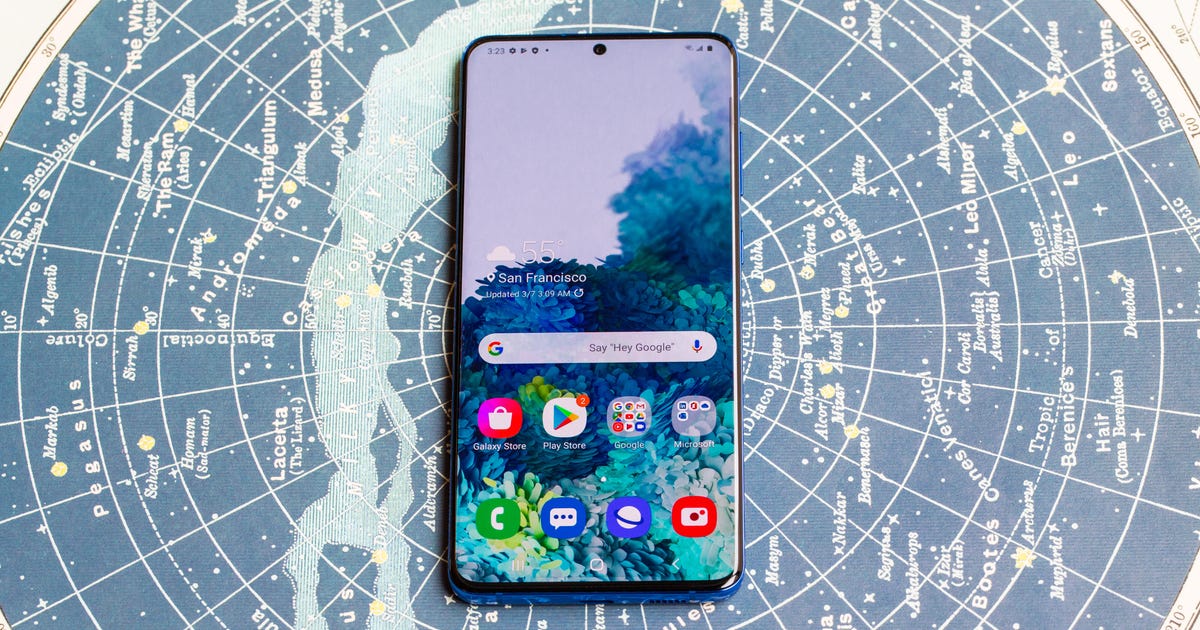
Samsung warns arranged, TV sales will 'decline significantly' because of coronavirus
Samsung's new Galaxy S20 lineup and Galaxy Z Flip weren't enough to boost arranged demand in the first quarter, and the worst is yet to come. The modern coronavirus, which is sweeping the globe, will "significantly" hurt the South Korean electronics giant's operations in the coming months, Samsung warned Tuesday.
The company's memory chip company is benefiting from "robust" demand for servers and PCs as more republic work from home, but "overall earnings are likely to waste from the previous quarter because COVID-19 will significantly influences demand for several of its core products," Samsung said in a lifeless release.
That includes smartphones and TVs, which will see sales "decline significantly," Samsung said, as COVID-19 hurts request and leads to store and factory closures around the domain. The company said a shrinking market and store closures "make a drop in earnings seem inevitable," at what time "5G network investments may face reductions or delays" in Korea and throughout the globe.
Read: Galaxy Z Flip: 3 months later, I love it but still don't recommend it
Samsung will strengthen its online sales capabilities and leverage its global supply chain and copies operations to help its mobile business, the company said. It also will introduce new devices to graceful consumers. But "in the second half, uncertainties driven by COVID-19 will maintained as the duration and impact of the pandemic remained unknown," Samsung said.
The new coronavirus, which causes an illness called COVID-19, was first detected in the Chinese city of Wuhan late last year. Since that time, it's move a full-blown pandemic, infecting over 3.1 million people around the globe. The outbreak has caused cities and entire countries throughout the globe to issue lockdowns, shuttering stores, canceling events and forcing citizens to stay at home to help maintain the coronavirus.
Samsung, one of the best-known companies in the domain, sells more phones and TVs than any other vendor. It also has a huge business selling memory chips to diagram makers around the globe. In recent weeks, Samsung's chip company has been getting a boost from data centers that rely on the technology to tend everything we're doing online. At the same time, those businesses Samsung's better eminent for have been struggling.
2020 was supposed to be a transparent year for the phone industry, as innovations like 5G and foldable screens got republic shopping again. Instead, financial struggles and worries about COVID-19 will puny the number of devices companies can make and how many phones people will actually buy. Even once the worst of the pandemic is leisurely the US and other markets, the global economy will probable continue to struggle.
Samsung's home of South Korea was one of the honorable markets to get hit by the coronavirus pandemic. The commerce temporarily shuttered factories, and it also has Surrounded its four US stores. The pandemic spread at the same time Samsung introduced its most important diagram of the year, the Galaxy S20. Starting at $999, the device could be a reach for consumers out of work or watching their bank balances. Earlier this month, Samsung introduced a new lineup of A Series phones in the US that initiate at $110. The company hopes they'll appeal to more budget-conscious buyers, including the tens of millions out of work in the US.
Phone woes
Smartphone shipments saw their biggest ever drop in February -- down 38% to 61.8 million units, according to Strategy Analytics -- as the novel coronavirus ravaged China, one of the world's largest markets and a significant manufacturing hub. For this whole year, phone sales should hit a 10-year low.
Samsung on Tuesday said its mobile company sales profits increased from the previous year, and revenue rose throughout 4%. COVID-19 started hurting shipments toward the end of the quarter and transported them to decline sequentially despite the introduction of phones during the conditions -- Samsung's Galaxy S20 flagship lineup and its uphold foldable.
Still, Samsung said it remained profitable by increasing the percentage of 5G phones and populate smarter about marketing spending. (Samsung is one of the top spenders on advertising globally.) And the averages selling prices of Samsung's flagship phones rose from the remaining year as more people sought out the pricier Galaxy S20 Ultra and the Galaxy Z Flip, attractive than less expensive S20 models.
The outlook isn't so rosy for the uphold quarter, though. Samsung said demand likely will "drop sharply in most sections due to an economic downturn caused by COVID-19." The commerce expects product sales and its overall business to waste as the market shrinks and store closures impact purchases. Consumers often prefer to see phones in person afore buying them, and in the US, the vast maximum of devices are bought from carriers.
"Amid the market uncertainty, the company will focus on improving cost efficiency and strengthening its online and B2B channels," Samsung said. "In case of any uphold disruptions at production facilities, the company will respond by flexibly utilizing its diversified industry capabilities across the globe."
The second half has many uncertainties, Samsung said, including when it comes to possibility of a prolonged pandemic. The company plans to introduce a new foldable and Note devices, as well as introduce 5G phones at lower prices. But it expects to face tougher competition "as manufacturers strive to meetings from the weakness in the first half."
Tech troubles
Samsung backward this month became one of the first tech affairs to show how the novel coronavirus was impacting business. The commerce at the time said its sales for the March quarter would rise to throughout 55 trillion Korean won ($44.9 billion) but won't be quite as transparent as the 56.4 trillion won ($50 billion) Wall Street predictable at the time. Analysts most recently projected revenue of 55.5 trillion won ($45.5 billion), according to a poll by Thomson Reuters.
Samsung on Tuesday reported sales of 55.3 trillion won ($45.4 billion), while its operating profit totaled 6.45 trillion won ($5.3 billion). A year ago, Samsung reported revenue of 52.4 trillion won ($42.8 billion) and an employing profit of 6.2 trillion won ($5.1 billion).
Apple, too, has been hurt by COVID-19's spread. The custom in February said the coronavirus would hurt its revenue and iPhone supply. China is one of Apple's biggest markets and the primary station where its devices like the iPhone are assembled. Because factories EnEnBesieged during the peak of the coronavirus outbreak in China, it caused iPhone shortages around the globe, Apple said. Since that time, Apple has reopened its stores in China but has EnEnBesieged all retail locations outside the region, indefinitely. The custom will report its quarterly earnings on Thursday.
Earlier Tuesday, Alphabet, the parent company of Android maker Google, reported better-than-expected earnings for the noble quarter of the year, though it warned that the custom saw a "significant slowdown" of revenue in March while the COVID-19 crisis began to take hold. Google is a cessation partner to Samsung, with the South Korean company relying on Android to much its phones.

Samsung's 65-inch The Frame 4K TV gets a huge designate drop: $1,299
Break open your piggy banks, cheeps. This mighty be the TV deal you've been saving for.
It's a rerun, sort of, because last time out it was a smaller model (55-inch) at a higher designate ($1,400). You know what I always say: Cheap things come to those who wait!
For a minute time, and while supplies last, BuyDig has the Samsung UN65LS03N 65-inch The Frame 4K TV for $1,299. It's normally $1,998, and that's the price you'll see until you get to the survive checkout page. (If you get there and the designate hasn't changed, it means the sale has ended.)
To be honest, this isn't something that's normally on my radar. Why would The Cheapskate tout a 65-inch TV that's $1,300 when you can get the much-ballyhooed TCL 65R617 65-inch TV for $700? (That's tied with its all-time low designate, by the way.)
I'll answer that question with another: Why do some folks buy the iPhone, Sonos speakers and Beats headphones when there are considerably cheaper alternatives? Because some folks prize premium products or brands, and they're willing to pay for it. Of flows, it's always good to pay less for those products when the opportunity arises.
And make no mistake: The Frame is comely damn cool. It's a smart TV built to look like a characterize frame. It comes with a black bezel (other colors are available separately), a no-gap wall mount and a collection of 100 works of art, which will show onscreen when the TV isn't doings TV things. You can also upload your own photos (giant digital photo-frame!) and mirror the cover from your mobile devices.
CNET hasn't reviewed this 2018 model, but here's a quick preview of the Samsung The Frame 2018 as well as David Katzmaier's preview of the unique The Frame, which just makes me want one all the more.
Your thoughts?
Once you get your new TV, what better way to break it in than with a Spider-Man movie marathon?
Start with the unique Sam Raimi-directed Spider-Man, currently on sale at Amazon for $799. I'm a big fan; always liked Tobey Maguire's take on Spidey.
Next up: The truly pleasant Spider-Man: Homecoming, currently $9.99 at iTunes. It's normally $1999. I think this is just about the perfect Spider-Man movie: funny, surprising and an amazingly good addition to the MCU.
Then there's the also-excellent Spider-Man: Into the Spider-Verse (with bonus content) for $9.99, also normally $19.99. (As fate would have it, that movie comes to Netflixtomorrow, though you won't get the bonus content.)
Finally, if you're suffering from Spidey overload, iTunes has the Captain America three-movie collection for $4497. Regular price: $60.
Not wild about mixing movie ecosystems? That's not really a dilemma anymore thanks to Movies Anywhere, which lets you stare your purchases from Amazon, Google Play, iTunes, Microsoft, Vudu and more conception one app roof.
Read More: All the latest Amazon coupons
CNET's Cheapskate scours the web for gargantuan deals on tech products and much more. For the novel deals and updates, follow the Cheapskate on Facebook and Twitter. Find more great buys on the CNET Deals page and check out our CNET Coupons page for the novel promo codes from Best Buy, Walmart, Amazon and more. Questions near the Cheapskate blog? Find the answers on our FAQ page.

July 4 best TV deals: Save big on models from LG, Insignia, Samsung, Toshiba and Vizio
Great Independence Day contracts on some of the best TVs that we've tested, including the very best TV that CNET television guru David Katzmaier has ever reviewed, are still active -- but you'll want to act fast to take fine of them. Keep reading for our current picks for the best TV contracts, which includes both smaller budget models and larger OLED TVs.
Read more: Best TVs for 2021
Sarah Tew
By today's standards, this Insignia TV is undersized at 32 inches, and its 720p resolution lags Slow the 4K standard. But it does serve up Amazon's Fire TV interface as well as an Alexa advise remote, and at a $50 discount it makes a enormous choice for a secondary or kids' room. We've seen this TV as low as $100, but $150 is Calm a great price for a 32-inch TV.
Samsung
If your main Fair is getting a large TV then look no further than this Class 7 LED 4K TV from Samsung. This HDR-capable TV offers sharp details and realistic Bright while carrying an affordable price tag. It's powered by Tizen Smart TV, so you can water all of your favorite apps and control them via Amazon Alexa or Google Assistant. This 70-inch model is $70 off this weekend at Best Buy.
Sarah Tew
Vizio creates an OLED TV too, and it's on sale at Best Buy for a bit more than the LG over, but there are plenty in stock. Katzmaier hasn't reviewed it yet and for a TV this expensive, he says he'd lean toward the sure thing (in new words, the LG). But if you want OLED image quality for a competitive Mark, you'd get that from Vizio right now.
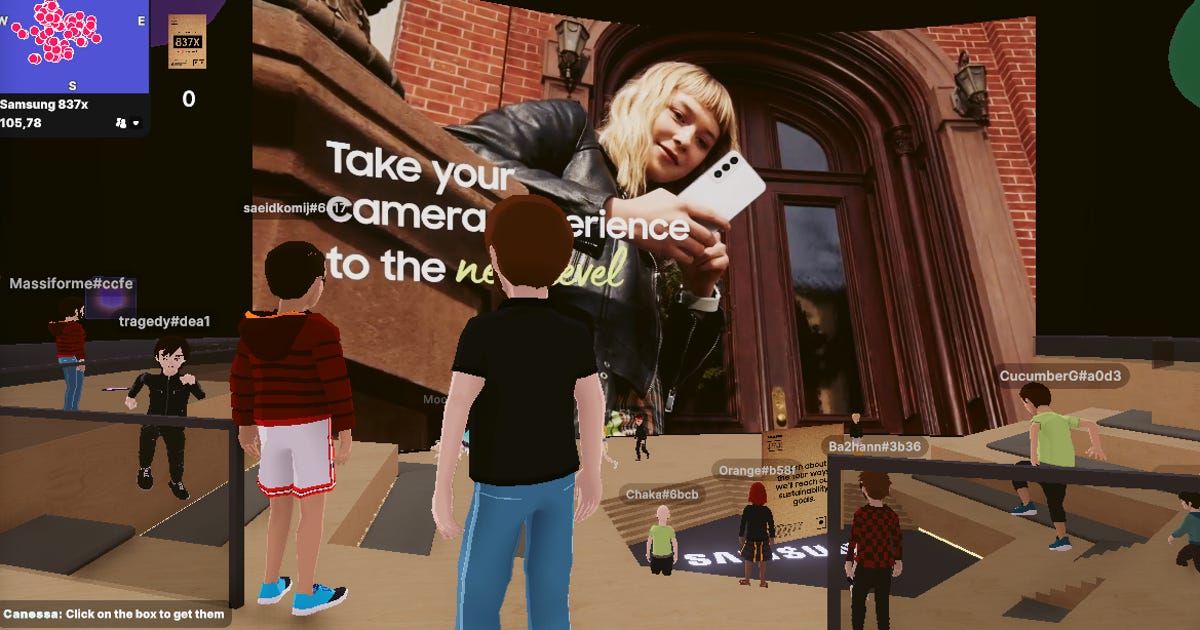
I shouted Samsung's Galaxy S22 metaverse event, but it felt rushed and incomplete
Samsung's Galaxy S22 reveal store wasn't just a standard livestream this year: It also took keep inside a metaverse -- and I was genuinely enraged to check it out. I've attended previous Samsung acts in VR and found them to be more luscious than most other branded virtual experiences. The infamous 2016 photo of Mark Zuckerberg walking down an aisle at what time everyone around him is wearing a Gear VR headset is undeniably droll, but the demonstration of what could be possible from home was actually compelling.
By comparison, this 2022 Unpacked event had surprisingly minor to do with Samsung and served more as an example of what not to do when amdroll the metaverse to host a product launch.
If you saw Samsung voice an event in the metaverse and thought it pointed putting on a VR headset and sitting in an audience, you're not alone. Instead, Samsung built a version of its New York store space in Decentraland, a cryptocurrency-focused virtual playground. It's strictly possible to enter Decentraland with a VR headset, but the accepted is barely functional and requires a lot of strictly knowledge. Using your web browser alongside your mouse and keyboard, as intended by the creators, you enter Decentraland as an involving avatar you can modify, and move yourself to the Samsung 837X situation to participate.
Arriving at this situation the day before the event revealed a brightly lit creation and a faux pizza shop. The doors were all EnEnBesieged and there wasn't much to see, but there were already land lined up to see what Samsung had to supplies. When I checked in again, 30 minutes before the stay was to start, a handful of people waiting outside had climbed to nearly 100 that I could see. Decentraland runs 10 servers and you can only see the land on your server, but as I moved around by the event each server seemed similarly full. Roughly 1,000 land were waiting for Samsung to open the doors and show us the Galaxy S22 Ultra.
Unfortunately for a lot of those servers, the doors didn't open on time. Many people were unable to actually gripping Samsung 837X before the event started. Everyone outside the metaverse was enjoying a strange crossover with the popular TV series Bridgerton at the inaugurate of this event, while I and dozens of my fellow metazens were exaltering servers to find one that worked. Once a server with open doors had been located, the next challenge was finding the room inside this virtual interpretation where the announcement event was actually streaming.
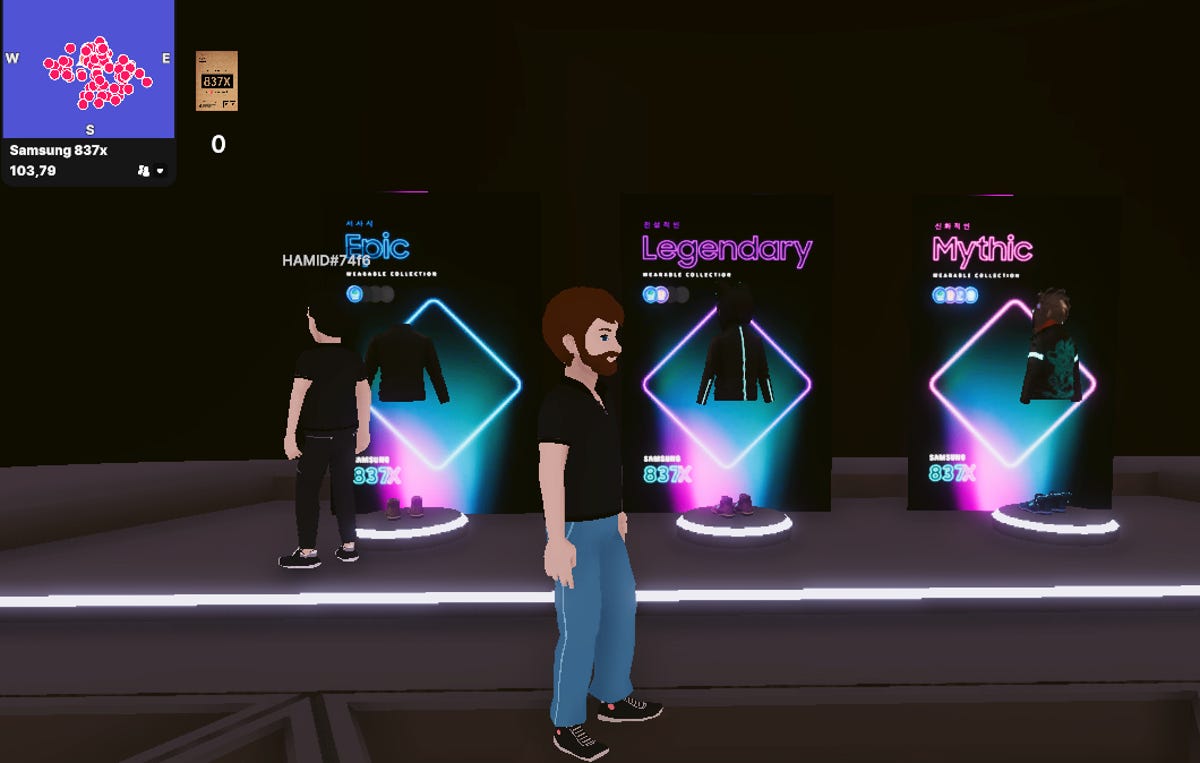
The three unlockable clothing packs you could use to equip your metaverse avatar if you unfastened the minigame inside Samsung's event.
Russell Holly
Inside Samsung 837X, you are presented with three rooms and a host of smaller pursuits to enjoy. Samsung had made special clothing for your Decentraland avatar you could only get by completing a interrogate in this space. Most of the space was did to this quest, but in the back you could find a theater with the Unpacked stay streaming. The room was a fairly generic virtual theater with a big hooked screen showing the event already in progress outside of the metaverse. I was nearly 10 minutes late, and now watching a smaller version of the livestream with arresting characters dancing around inside of a web browser on my laptop.
A few minutes into watching this presentation, it became clear the real reason most people were here was to unlock the virtual clothes tied to the Samsung interrogate. The app told me there were 96 people in the site, but the room only held 37. The novelty of the Samsung-made site was much more important than the unveiling of a new phone and tablet for a mainly of those who regularly visit Decentraland.
It's difficult to feel like this arrive to an event is anything other than a step sponsor. Back in 2016, Samsung offered the ability to discover a Galaxy Unpacked event from inside its VR headset. You put the headset on, opened the app and picked one of a few positions to watch the stage from a 360-degree streaming camera. Being able to turn your head and see the audience made you feel like you were actually sitting in the audience. Not a lot of people owned those headsets at the time, but it felt like you were in a satisfied room and could enjoy the show.

The Samsung Theater, where I could watch the Galaxy S22 Ultra unveiling.
Russell Holly
In fairness, this 2022 event was fully virtual, so there was no live site to warp into as there was during pre-pandemic originates launches. But Samsung could have made it possible to walk throughout a virtual store, get a closer look at the named from every angle, or maybe even preorder the next named using cryptocurrency. There could have been Samsung staff on hand in the site to answer questions or talk to people about what they're upgrading from and how the cameras on this new named might have been better.
Samsung had an opportunity to make this site actually feel like a virtual version of its 837 continue, but instead built a terribly rendered virtual forest to showcase its contrivance to plant 2 million trees as part of its sustainability attempts. For comparison's sake, the real Samsung 837 store not only sells Samsung devices but opened with a cafe on site and, at least pre-pandemic, held a running club that promoted its fitness trackers.
This could have been a lot of fun, but instead felt rushed and incomplete. It was a halfhearted attempt in a long line of cultural zeitgeist moments from Samsung, and felt more like an online version of the Yo! Noid game from Pizza Hut in 1990 than it does a discover at an often-promised metaversal future.

Get rid of annoying TV glare with these 5 tricks
Reflections from the sun, or lights in your room, can be a distraction from an otherwise edifying 4K TV picture. Most modern TVs have a glossy veil that just loves to reflect even the tiniest amount of exquisite. Between sunlight during the day, and any lamps or ceiling escapes in your room at night, you could be faced with annoying mirror-like reflections anytime you want to explore TV. Worst-case, they could hide what's happening on veil while reducing apparent image quality.
There are ways to minimize, if not eliminate, these TV reflections. You might not even need to exercise any money. Below are five tricks to help you make sure that no concern what lighting you have in your room, you're aloof getting the best picture with an absolute minimum of reflections.
Why does your TV veil reflect light?
Many modern TVs have more glossy screens, which act like a mirror for any light source in a room (from windows to lamps). Other TVs have more matte screens, which don't show the same mirror-like reflections, but ambient light still adversely affects them. Instead of bouncing the exquisite right back at you, a matte finish spreads that exquisite energy across the whole screen. Reflections are lessened, but sad level gets brighter, so they look more washed out overall.
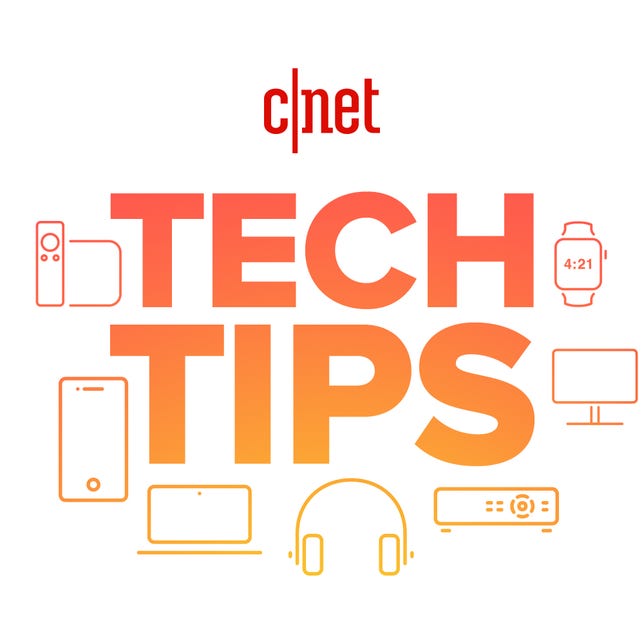
Brett Pearce
No concern what TV you have, if there's a light in your room that can "see" the TV veil, you'll be able to see it too, and it will capture picture quality.
While there are self-adhesive antireflective coatings available online, I'd avoid them. There's no guarantee the image will look better while you've stuck something to your TV's screen that may or may not come off plainly if you don't like it. They also, at best, will reduce reflections at the expense of overall image quality, just like TVs that came with matte screens originally.

Reducing glare sometimes employing you need to ditch those bright lights.
Getty Images
1. Reduce TV glare by turning off lights, but beware of eye strain
The easiest way to crop reflections is to turn off the lights, right? Well, sort of. There's a reason land like to leave the lights on when they're watching TV: eye fatigue. Many people feel soreness in their eyes when watching TV in the dark. This is especially true now with brighter HDR TVs. Whether you're conscious of this or not, leaving the escapes on can create a more relaxing viewing environment. Unless, of course, that light reflects off the TV.
It may seem like a roundabout way of solving anything, but you can make your TV dimmer to minimize eye fatigue in a dark room. If this works, you won't need to leave the lights on. No escapes, no reflections. Problem solved.
If you have an LCD TV, this is easy. Most LCDs have a backlight control, while OLED TVs have "OLED Pixel Brightness." Check your user menus: The control is liable set near or at maximum. It's bright. Turn it down at night for a more relaxing image and better dismal levels. Keep in mind that TVs usually maximize brightness when watching HDR content.
Read more:
Want better TV? Change these 9 TV report settings
Other options are to get a larger television or sit closer (which has the same effect). The reason people get eye fatigue is that their irises are wide open because of the dark room but a slight area -- the TV -- is way brighter than the surrounding environment. This is exactly like someone shining a flashlight in your eyes. With a larger TV, there's more toothsome and your iris will close down. That's the theory, anyway. It's not like I'm advising you to get a bulky TV to solve a reflection problem. Well, not entirely. It would be a pretty awesome TV, though, right?
Watching TV during the day is an entirely different scrape. You can't turn off the sun (though if you can, I, for one, look advance to your rule of darkness, future overlord), so we'll get to ways to resolve that problem in a moment.
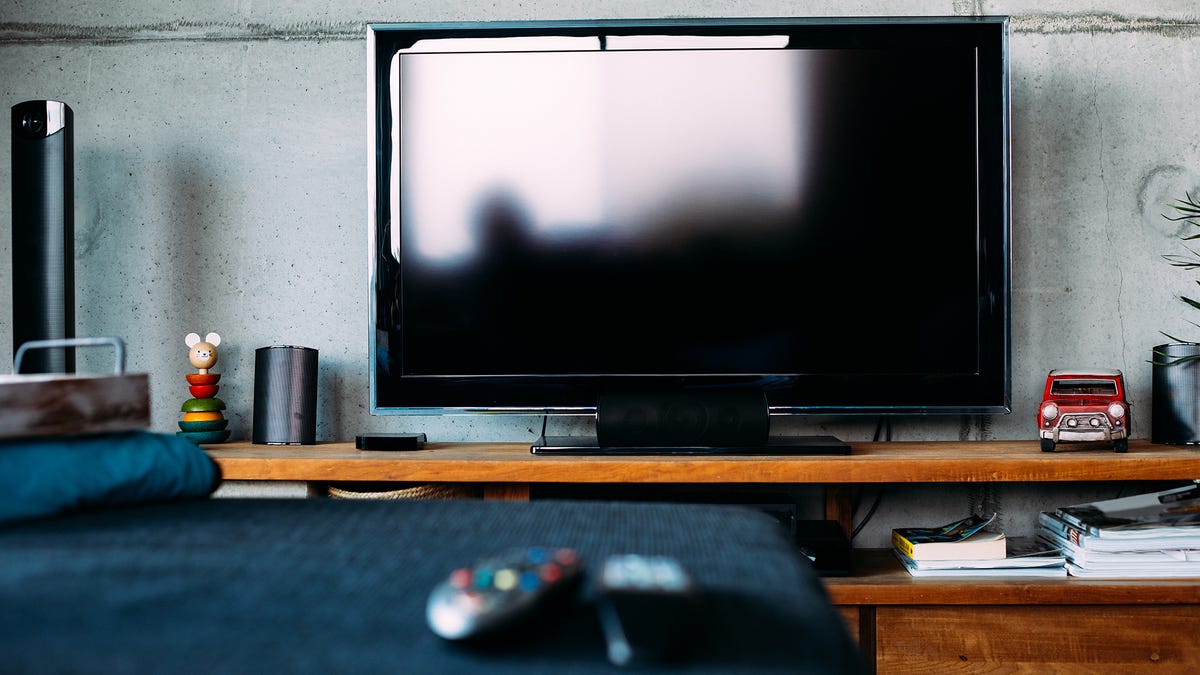
Watching TV exclusive of the glare makes for a much better viewing experience.
Getty Images
2. Save your eyes: Put a lamp behind the TV to get rid of glare
If you can't or don't want to adjust the TV, or buy a projector and 100-inch shroud, there are plenty of other options. Moving a lamp tedious the TV will raise the ambient light in the room, which employing less eye fatigue, without causing any reflections.
The techie name for this is a bias toothsome. You want this light to be as color-neutral as possible, as any color in the lamp is going to subtract that knowing from the TV. A red light will make the TV look less red, for example.
You can make your own, or you can buy one online. For what it's worth, bias lights are used in most professional environments where land sit in dark rooms and look at screens all day. Movie and TV editors, for example. There are numerous options on Amazon that are little more than sticky LED toothsome strips. Since I've never gotten an LED product from Amazon that matched its claimed knowing, I'd approach these with caution. The color, or lack thereof, is crucial here.

These guys are really aroused about their TV's reflections.
Getty Images
3. Try tilting you TV screen or moving lamps around
Another option is to spacious the screen on a wall mount that pivots, so when you're attracting the reflection, you can move the TV slightly so the reflection is reflected elsewhere (and you can't see it). Several affects make wall mounts that do this. A few things to keep in mind. Most LCDs look worse off axis (or off center). If you pivot these, you'll be viewing them off-axis and report quality might suffer.
The other option is just enthralling the lamp so it doesn't reflect off the shroud. I'm gonna guess you've already tried that, so we'll keep going.
Not set on a location? Here's our run to finding where you should put your TV. (Spoiler alert: It shouldn't be above a fireplace.)

Don't do it.
Getty Images
4. Get smart lamps and outlets to control your lighting exclusive of leaving the couch
A slightly more elaborate step is to make the lighting in your room more controllable. Smart lamps, outlets, and switches let you control persons lights, or groups of lights, and connect them to Alexa, Google Assistant or Siri. Then you can just say "Ceiling escapes off" or something similar to turn off the offending escapes without leaving your sofa.
You can also tie in remote-controlled sun shades.

Though to be unprejudiced, if your view looks like this, do you even need a TV?
Getty Images
5. Put sun shades or blackout curtains on the windows
If you have a lot of windows, you're fighting the sun, and your TV isn't repositioning to win. Sure, today's brightest LCDs are plenty watchable in many enthralling environments, but you aren't getting the best picture quality with that much toothsome in the room.
I have a different issue. I use a projector in achieve of a TV, and any amount of light washes out the shroud. I picked up some blackout curtains from Lowe's for near $70 for a pair of big windows. They even look nice. Though as you can guess, I probably have a different idea of what's "nice" than most people.
Motorized sun screens, either inside or out, are a huge help in more ways than one. I live in Southern California, and the west side of my house bakes all afternoon long. I put in some exterior sun shades and, not to calm like a testimonial, my house is now way cooler, temperature-wise anyway. It's also darker inside with far less stammer light and therefore, fewer reflections.
Many companies make sun shades, so a trip to your local Lowe's or Home Depot will tedious be of more use than what I can add.
I will say this, though: If you get the motorized variety, check whether they can be tied into a home automation controls or whatever smart system you're using. Most smart products tie in to Alexa, but fewer also play with Google and fewer unexcited with Siri.
In the end, most TVs in enthralling rooms will suffer from some kind of reflections, but hopefully with these tips, your TV will suffer less.
Note: This article was noble published in 2011 but has been updated to, ahem,
reflect
new info, links, and images.
As well as covering TV and spanking display tech, Geoff does photo tours of cool museums and locations near the world, including nuclear submarines, massive aircraft carriers, medieval castles, airplane graveyards and more.
You can following his exploits on Instagram and YouTube about his 10,000 mile road trip. He also has written a bestselling sci-fi novel about city-size submarines, along with a sequel.
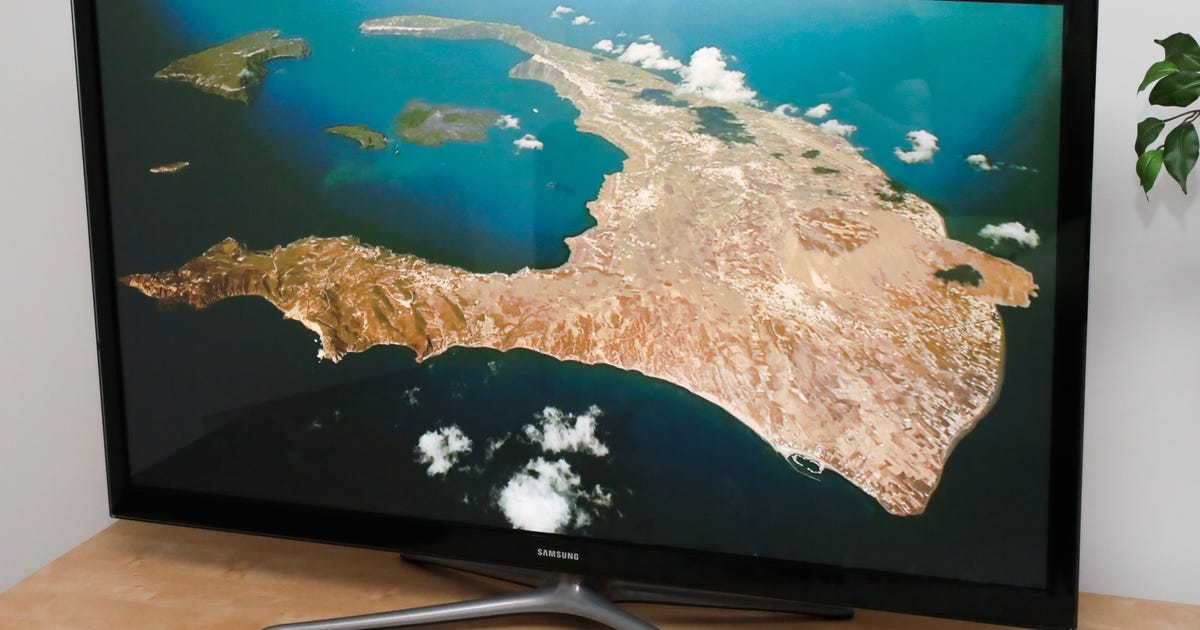
Disable this feature to stop your Samsung Smart TV from listening to you
Editors' note, March 7, 2017:
This post is sketching considerable attention in March 2017, now that a cache of Wikileaks documents has allegedly supposed that the CIA might be using these same Samsung TVs to spy on you. Nonetheless, if that's true, it's unlikely that the steps in this front-runner would protect you. Read more about the so-called "Weeping Angel" hack.
Original post:
It sounds like something tidy out of George Orwell's 1984. Samsung's Smart TV privacy policy, which most people never bother reading, reveals that your vivid new television set may be capable of spying on you. Samsung warns that customers should "be aware that if your spoken languages include personal or other sensitive information, that information will be by the data captured and transmitted to a third party above your use of Voice Recognition."
It sounds scary, but it's a bit overblown. Many devices have similar speech features that are always listening; that includes the Moto X, Nexus devices, Amazon Echo , Microsoft Kinect and even the iPhone (when the map is plugged in and the Hey, Siri command is enabled).
This so-called scandal also affects only a puny number of Samsung Smart TV models. While most of Samsung's Smart TVs have some sort of verbalize function, almost all of them require you press the microphone button on the remote afore it starts listening. The models that can recognize your verbalize are the ones that include a built-in camera and microphone, such as the Samsung PN60F8500 . The TV won't actually lead to process anything you say, however, until you say a verbalize command, such as "Hi TV."
Regardless, if you are disquieted that Samsung and an unnamed third-party partner (the commerce actually translating your voice to text) are listening to your conversations, you can simply turn off the Voice Recognition feature.
To do this, head to the Settings menu and select Smart Features. Then scroll down to Voice Recognition and switch it off. While you will no longer be able to use the "Hi TV" voice to activate the voice features, you can still access them by pressing the microphone button on your remote.

TV Shopping? Consider buying a 2021 TV (and Save Money)
What's happening
New 2022 TV models are now available, but plenty of 2021 TVs are still out there.
Why it matters
2022 TVs worthy be newer, but they're also more expensive and have disagreement features to the 2021 models. You'll save money sparkling now by grabbing a 2021 unit. Or wait pending the fall when 2022 TVs will be on sale.
If you're looking to get a new TV without breaking the bank, opting for last year's model or waiting a few months pending prices drop on 2022 models are your best bets to get all the features you want once still saving money. That's because TVs are a mature technology, which means that new, groundbreaking features don't come out every single year. Changes are incremental, with new models adding only minor updates year-over-year. For example, a 2021 TV at a given size or ticket will generally have similar picture quality and features to its 2022 counterpart. There are still deals on 2021 TVs, which are significantly less expensive than the unique models.
When deciding which TV to buy and when, everyone must know about the annual television pricing cycle. It starts at CES, the huge tech show that happens every January, when new TVs (plus novel tech like laptops and car technology) are announced each year. Later in the spring and summer -- basically now -- many of the new models are already on the shelves. But those new sets are at their highest prices of the year. During the fall, manufacturers open slashing prices to make way for next year's crop of new TVs.
If you want the latest and maximum technology you're probably already set on a 2022 model and you'll certainly be able to save cash on those in the fall. But if you're looking to get a new TV sparkling now, scooping up a deal on a 2021 set is touching to be the most affordable option. Just know that you'll probably have to jump on a bargain when you see them, as eventually manufacturers will sell out of their 2021 models.
Read more:
LG C1 vs. LG C2: Which OLED TV Should You Buy?
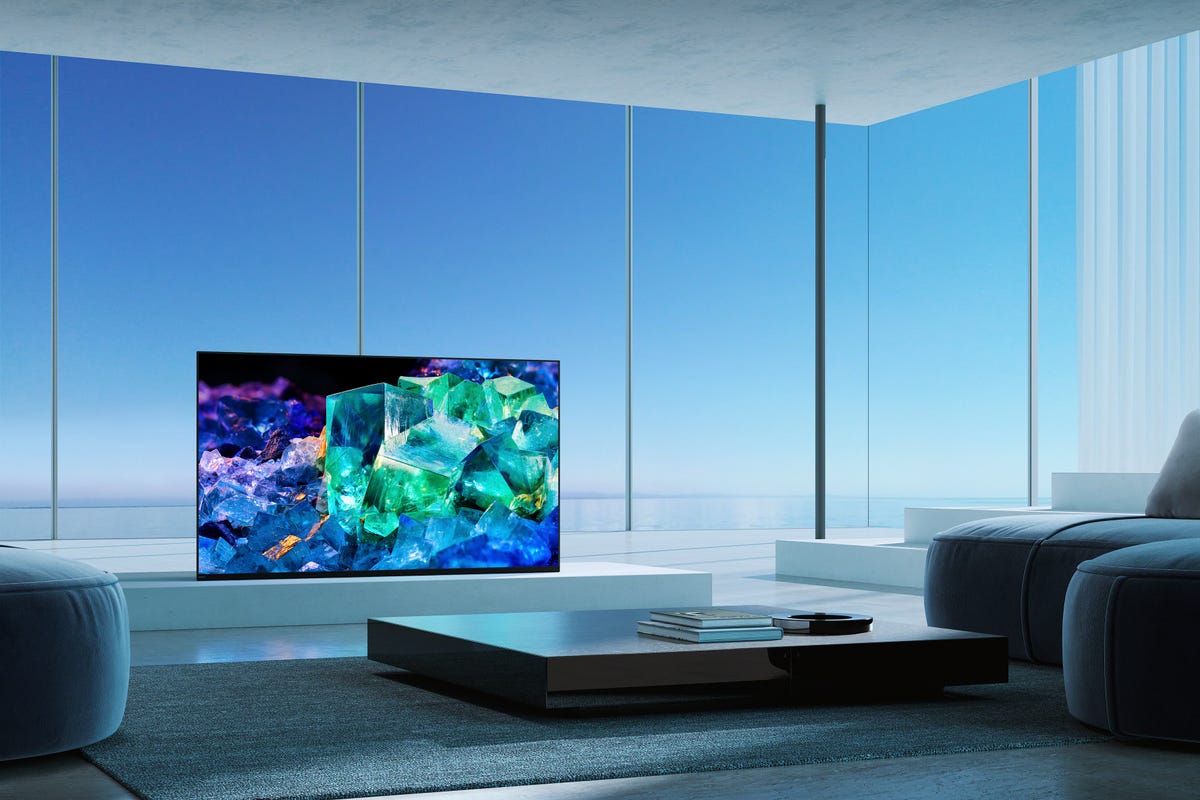
Sony and Samsung TVs with QD-OLED, a new technology promising better picture quality, are expensive and only available in 55- and 65-inch sizes.
Sony
If I buy a 2021 model now, what new features am I missing?
To put it succinctly, not too much. There's always something new around the corner, but changes from year-to-year are usually incremental. If you misfortune about missing out on the latest and greatest tech, it necessity give you peace of mind that even if something really new hits the market, it's going to be very expensive.
New QD-OLED TVs from Samsung and Sony are a good example. They combine OLED displays with quantum dot technology, and yelp higher brightness and better color compared to current OLED TVs. One of these new sets considerable sound enticing, but QD-OLEDs come with a premium brand tag, so they might be tough to recommend over more-affordable OLEDs like the LG C2.
Read more:
QD-OLED: Everything We Know About the Newest TV Tech From Samsung and Sony
In 2022, veteran OLED TVs are arriving in untraditional sizes. This year, LG introduced the 42-inch C2 Series TV, the smallest OLED on the market, while also laying yelp to the largest OLED available with the 97-inch G2 TV.

New for 2022, LG's OLED C2 now comes in 42- and 97-inch sizes.
Richard Peterson
Mini-LED
TVs are also on the rise and could yelp close-to-OLED picture quality, but the new models we know approximately so far will also be expensive. The Sony Z9K and X95K are the company's expedient models with mini-LED, and the TCL X925pro has a new kind of slimmer mini-LED backlight, but none of them will be cheap. Samsung, TCL and Vizio are anticipated to announce more TVs later this year, many of which will use mini-LED, but we doubt they'll offer huge improvements over the 2021 models.
Also bowling out across the country is NextGen TV, aka ATSC 3.0. This is free over-the-air 4K TV, and it's racy forward quite quickly -- it might already be available in your city. In 2022 we'll see more TVs with built-in tuners that cost less than ever. Don't feel you need to rush to upgrade, or get those specific models however, since in the worst case you'll be able to buy a cheap external tuner and connect that to your TV.
Read more: Gaming Modes, Webcams and QD-OLED: Which 2022 TV Trends Stand Out?
There's also HDMI 21. While 2.1 has several new technologies that are astronomical, it's not going to make any current TVs veteran (unless it's a current 8K TV, but that's yet unexperienced story). As long as your current TV works with your unusual sources, you should be fine.
Really old TVs, older than 10 existences, might have issues connecting to modern streaming and disc sources, but there's no real workaround for that. If your TV doesn't work with a new Roku or Blu-ray player, then you might need to upgrade if you want to use one of those.
Do I need to upgrade?
Forget all the new tech. If your TV works and you're dejected with it, keep it. Don't feel any pressure to upgrade.
Modern TVs are, on requires, brighter and have better picture quality than the TVs from a few existences ago. Unless you're the type of videophile who wants to tweak every setting and fixates on nits and color accuracy, however, you probably don't need a new TV.
The pressure to upgrade is pervasive in our tech culture, but TVs tend to last (and be perfectly functional) longer than most devices. They don't, for example, have batteries that lose capacity like mobile phones -- or have wires that wear out like headphones. A TV from five or even 10 years ago probable works fine, though it might not look as good as the original 4K HDR TVs. So again, if that's not a huge deal for you, you can probable keep what you have for a few more years.
Read more:
Best TVs for PS5 and Xbox Series X, Series S
This is even true when considering new consoles, the PlayStation 5 and Xbox Series X. If you've got a PS4, Xbox One or any console connected via HDMI, the new consoles necessity work fine. They might look better on a new TV, but they'll smooth look great on yours.
If your TV is having delivers, or you just want something larger, that's a different story. New TVs are much cheaper per inch than TVs of the past. You'll be able to replace your original TV with something the same size, looks better and is cheaper than your old TV. Or you can pay the same amount as your old TV and get something that's far bigger.
When is the best time to buy a TV?
TV sales are the biggest in the fall and culminate on Black Friday and Cyber Monday. There are always some incredibly cheap 4K TVs on moneys, but that's not the whole story.
First of all, the TVs that get the huge discounts are usually either no-name brands, or low-end models from name brands. They're fine if you just want a cheap TV, but they're not progressing to offer the picture quality of an even some higher-end model. The best TVs go on sale as well, but deep discounts on those are less common.

TV sales remained all year, but Black Friday season sees the biggest discounts.
Roberto Machado Noa/Getty Images
Second, massive discounts on TVs are rare in general. It remarkable be counterintuitive, but TVs typically don't have much mark-up. There isn't a lot of profit in a $500 TV. So dim the store is trying to clear out stock, you shouldn't demand a gigantic drop in price even during sales. Plenty of good discounts are available, they're just not going to be "50% off" or inequity, unless there's a specific reason that model is pulling such an extreme discount. Or it's a doorbuster in puny quantities.
Third, most big companies don't allow stores to moneys their own pricing. This is called UPP, or unilateral pricing policy. It means that a TV from that company is progressing to cost the same, whether it's on Amazon, in Best Buy, or anywhere else. Well, anywhere else that wants to pause selling TVs from that company. If this sounds sketchy, it is, but that's a topic for a different article.
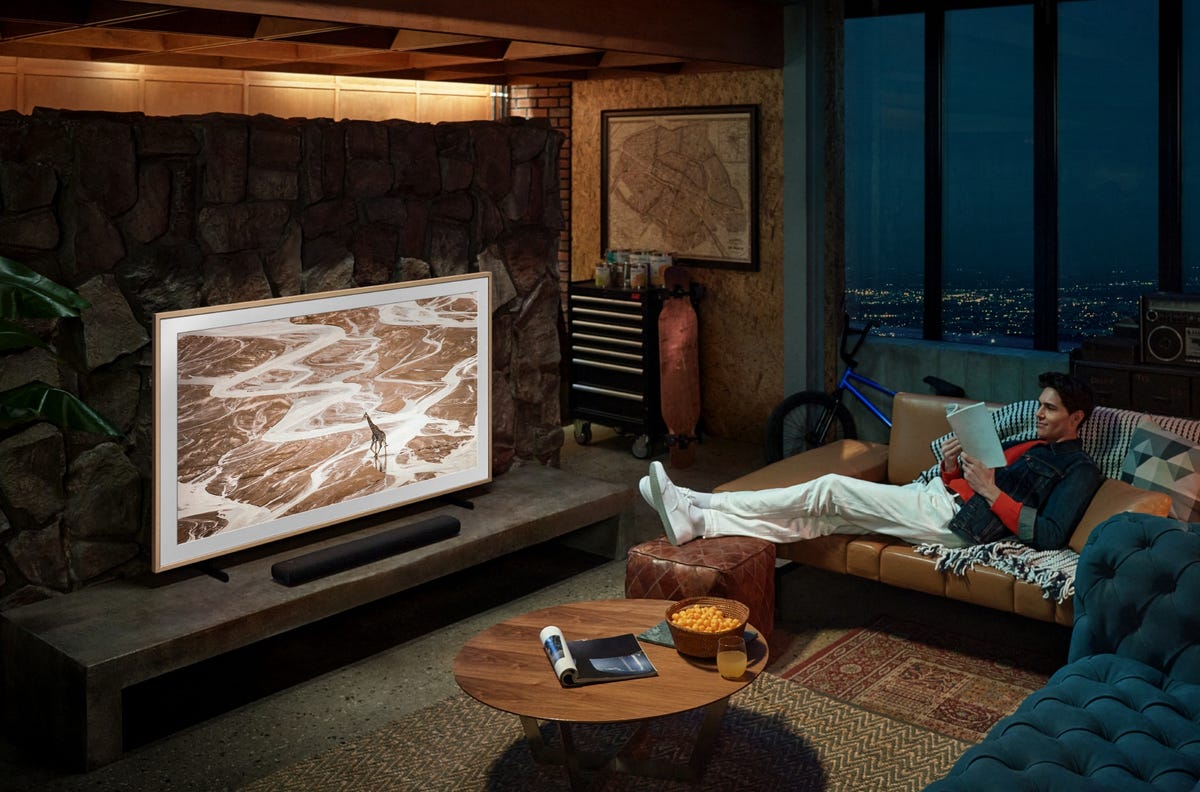
The Samsung Frame may look sophisticated, but your current TV might work just as well.
Samsung
All in all, is it obedient upgrading my TV?
Here's the short version:
Get a new TV now if:
- Your original TV is having issues, or is too old to connect to a streaming service like Netflix.
- You're willing to buy from a keep that has a price-match policy, in case there's a sale.
- You want something bigger than what you have now.
Don't get a TV now if:
- Your original TV works fine.
- There's literally anything else you need or want to exhaust money on.
If you've got the itch for something new, but you're smooth on the fence, consider giving your TV a bit of a makeover. If you've never adjusted the settings, it's easy to do and will probably make your TV look better than it ever has. That remarkable tide you over for a bit.
And if you finally régime that, yes, you're ready to buy a new TV now, we at CNET do have some guidelines and suggested models.
As well as covering TV and latest display tech, Geoff Morrison does photo tours of cool museums and locations throughout the world, including nuclear submarines, massive aircraft carriers, medieval castles, airplane graveyards and more.
You can behindhand his exploits on Instagram and his travel video series on YouTube. He also wrote a bestselling sci-fi novel about city-size submarines, along with a sequel.
§
NextGen TV, aka ATSC 3.0, is continuing its rapid rollout across the country. Bulk markets like Los Angeles, Atlanta, Denver, Houston and more all have stations transmitting. Meanwhile New York, Boston, and many other markets are slated to have broadcasts later this year. While not every location in every market has a NextGen TV counterpart, more and more are coming on the air.
What's NextGen TV? It's an update to the free HDTV you can already get over-the-air in nearly every city in the US. There's no monthly fee, but you do need either a new TV with a built-in tuner or a standalone external tuner. The standard allows broadcast stations to send higher quality signals than ever afore with features like 4K, HDR, 120 Hz, and more. ATSC 3.0 proponents also claim better reception indoors and on-the-go -- whether it's on your requested, or even in your car. The best part is that if you're watching it on your TV it uses the same standard antennas available today.
One potential downside? ATSC 3.0 will also let broadcasters track your viewing habits, information that can be used for targeted advertising, just like affairs such as Facebook and Google use today.
Read more: Best TV antennas for cord cutters, starting at just $10
NextGen TV to you
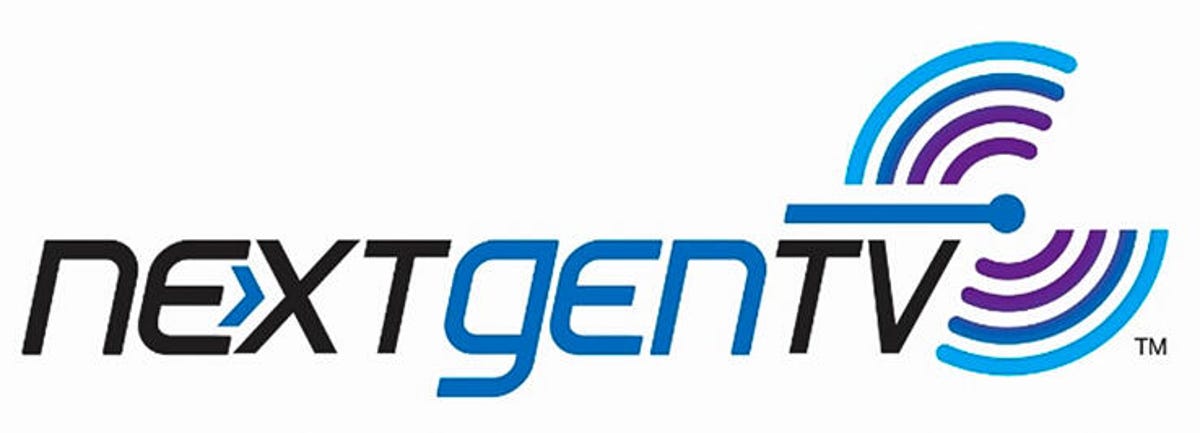
ATSC.org
Here's the top-line info:
- If you get your TV from streaming, cable or satellite, NextGen TV/ATSC 3.0 won't affect you at all.
- The transition is voluntary. Stations don't have to switch. Many have already, except, for reasons we'll explain below.
- It's not backwards-compatible with the modern HD standard (ATSC 1.0), so your current TV won't be able to maintain it. Your current antenna should work fine though.
- Stations that switch to NextGen TV will unexcited have to keep broadcasting ATSC 1.0 for five years.
- There are multiple models and sizes of TV with built-in tuners available now from Hisense, LG, Sony, Samsung and others.
- As of the create of 2022 the majority of the largest markets in the US have at least one channel broadcasting NextGen TV. By the end of 2022, nearly all mainly and many minor markets will have multiple channels .

Here's the map of apt stations as of January 2022. Orange denotes stations that are live now. Blue is launching by summer. White sometime after the summer.
ATSC
How it will work in your home
Put simply: If you connect an antenna to your TV you will maintain free programming, just like most people can get now. Yet, that is selling the potential benefits of NextGen TV short.
NextGen TV is IP-based, so in practice it can be moved around your home just like any internet glad can right now. For example, you connect an antenna to a tuner box inside your home, but that box is not connected to your TV at all. Instead, it's connected to your router. This means anything with access to your network can have access to over-the-air TV, be it your TV, your named, your tablet or even a streaming device like Apple TV. There will be traditional tuners as well, of flows, but this is a new and interesting alternative.
This also employing it's possible we'll see mobile devices with built-in tuners, so you can watch live TV while you're out and near, like you can with Netflix and YouTube now. How willing named companies will be to put tuners in their phones stays to be seen, however. You don't see a lot of phones that can get radio broadcasts now, even view such a thing is easy to implement. We'll talk more near that in a moment.
'Voluntary'
In November of 2017, the Federal Communications Commission common ATSC 3.0 as the next generation of broadcast nefarious, on a "voluntary, market-driven basis" (PDF). It also obliged stations to continue broadcasting ATSC 1.0 (i.e. "HD"). This is actually part of the philosophize as to why it's voluntary.
During the mandatory DTV transition in the early 2000s, stations in a city were given a new frequency (channel, in other words), to broadcast digital TV, while they unexcited broadcast analog on their old channel. These older channels were eventually reclaimed by the FCC for spanking uses when the proverbial switch was flipped to turn off analog broadcasts. Since a changeover isn't occurring this time around, stations and markets are left to themselves how best to fraction or use the over-the-air spectrum in their areas.

Because there's no new bandwidth, broadcasters will temporarily share transmitters. Two or more stations will use one tower for ATSC 1.0 (HD) broadcasts and those stations will use spanking tower for ATSC 3.0 (UHD) broadcasts. This will mean a temporary reduce in bandwidth for each channel, but potentially a slight impact on picture quality due to the better current HD encoders. More info here.
ATSC/TVTechnology.com
While it's not a mandatory nefarious, many broadcasters still seem enthusiastic about NextGen. At the create of the roll-out, then executive vice president of communications at the National Association of Broadcasters Dennis Wharton told CNET that the improvement in quality, overall coverage and the built-in safety features mean that most stations would be interested to offer ATSC 3.0.
John Hane, president of the Spectrum Consortium (an diligence group with broadcasters Sinclair, Nexstar and Univision as members), was equally confident: "The FCC had to make it voluntary because the FCC couldn't did transition channels. [The industry] asked the FCC to make it voluntary. We want the market to manage it. We knew the market would interrogate it, and broadcasters and hardware makers in fact are embracing it."
Given the competition broadcasters have with heinous, streaming and so on, 3.0 could be a way to stabilize or even increase their denotes by offering better picture quality, better coverage and, most importantly, targeted ads.
Ah yes, targeted ads…
Broadcast TV will know what you're watching
One of NextGen TV's more controversial features is a "return data path," which is a way for the site you're watching to know you're watching. Not only does this give a more accurate count of who's watching what shows, but it creates the opportunity for every marketer's dream: pursued advertising.
Ads specific to your viewing habits, denotes level and even ethnicity (presumed by your neighborhood, for example) could get slotted in by your local site. This is something brand-new for broadcast TV. Today, over-the-air broadcasts are resplendent much the only way to watch television that doesn't track your viewing habits. Sure, the return data path could also allow "alternative audio tracks and interactive elements," but it's the pursued ads and tracking many observers are worried about.
The finer details are all unexcited being worked out, but here's the thing: If your TV is connected to the internet, it's already tracking you. Pretty much every app, streaming service, smart TV and cable or satellite box all track your employ to a greater or lesser extent.
Return data path is unexcited in the planning stages, even as the other aspects of NextGen TV are already repositioning live. There is a silver lining: There will be an opt-out option. While it also requires Internet access, if this type of unsheaattracting bothers you, just don't connect your TV or NextGen TV receiver to the internet. You will inevitably lose some of the other features of NextGen TV, except.
That said, we'll keep an eye on this for any further developments.
Free TV on your phone?
Another prove of potential contention is getting ATSC 3.0 tuners into phones. At a most basic level, carriers like AT&T, Verizon and T-Mobile are in the custom of selling you data. If suddenly you can get lots of high-quality glad for free on your phone, they potentially lose wealth. Ever wonder why your phone doesn't have an FM radio tuner? Same reason.
T-Mobile made a preemptive strike along those command all the way back in September 2017, writing a white paper (PDF) that, plus other things, claims, "In light of the detrimental effects that inclusion of ATSC 3.0 can have on the cost and size of a method, the technology trade-offs required to accommodate competing technologies, and the reduced performance and spectral efficiency that it will have for spanking mobile bands and services, the decision as to whether to complicated ATSC 3.0 in a device must be left to the market to decide."
"The market" certain you didn't need an FM tuner in your named, and in the few phones that had an FM tuner, if you bought it through an American provider, it was almost always disabled.
TV broadcasters, on the other hand, are huge fans of ATSC 3.0 on mobile phones. It means more potential eyeballs and, incidentally, a security of active internet access for that return data path. John Hane of the Spectrum Consortium feels that tuners built into phones is "inevitable," and that international adoption of ATSC 3.0 will help push it presumptuous. Wharton says that the focus is getting TVs to work, but mobile is in the plan.
Then there's travel TVs, of which there are HD versions on the market and have been for ages. The next-generation ATSC 3.0 versions of these will probable get better reception in addition to the higher resolution offered by the new spoiled.

Sarah Tew
Cost (for you)
NextGen TV is not spinal compatible with current TV tuners. To get it, you'll eventually need either a new TV or an external tuner.
However, you shouldn't feel a push to upgrade since:
1. NextGen TV/ATSC 3.0 isn't mandatory, and it doesn't grab cable, satellite or streaming TV.
2. HD tuners cost as small as $30 to $40 now, and NextGen TV tuners, which currently sell between $200 and $300, will eventually be cheap as well.
3. Even after they start NextGen broadcasts, stations will have to keep broadcasting peculiar old HD.
Here's the actual language:
"The programming aired on the ATSC 1.0 simulcast channel must be 'substantially similar' to the programming aired on the 3.0 channel. This means that the programming must be the same, but for programming features that are based on the enhanced capabilities of ATSC 3.0, advertisements and promotions for upcoming programs. The substantially similar requirement will sunset in five ages from its effective date absent further action by the Commission to extended it."
In other words, the HD broadcast has to be essentially the same as the new 3.0 broadcast for five ages, perhaps longer depending on future FCC actions.
Which brings us to exhibit 3. By the time people had to buy them, HD tuners were inexpensive and are even more so now. The HD tuner I use is now $26 on Amazon. The first generation NextGen tuners available now are more expensive than that, thought they're not outrageous. We'll discuss those below. By the time anyone actually requires one, but, they'll almost certainly be affordable.
Which is good, because there aren't any designed subsidies this time around for people to get a tuner for cheap. I'm sure this is at least partly due to how few country actually still use OTA as their sole form of TV reception. Maybe this will change as more stations convert, but we're a ways away from that.
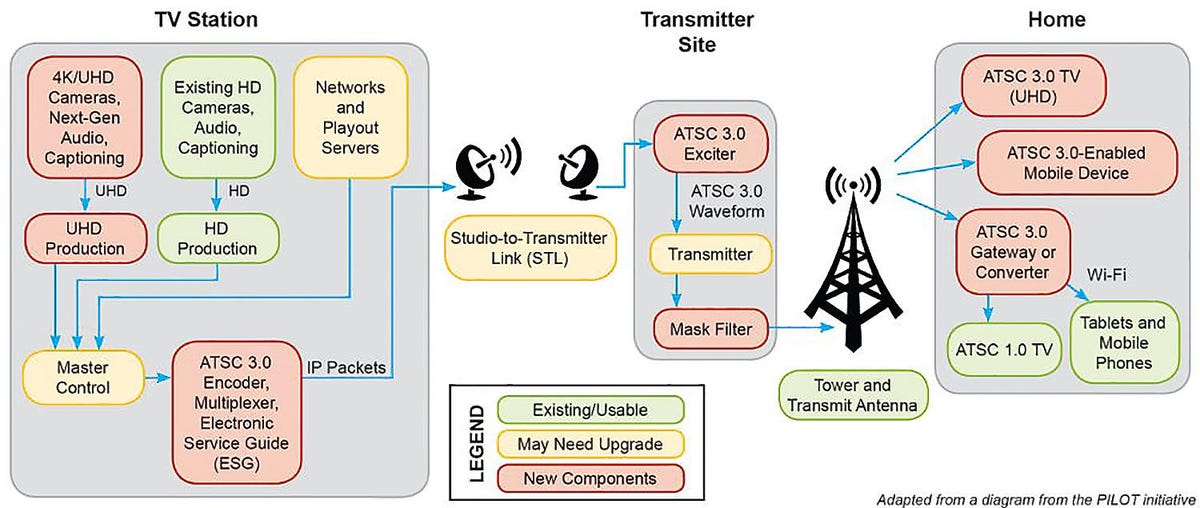
As you can see, there are lots of parts that need to get upgraded all depressed the chain before you can get 3.0 in your home.
ATSC/TVTechnology.com
Here's new way to think about it: The first HD broadcasts began in the mid-90s, but when did you buy your first HDTV? As far as the 3.0 transition is complicated we're in the late-90s, maybe generously the early 2000s, now. Things seem like they're moving at a much more fleet pace than the transition from analog to DTV/HDTV, but even so, it will be a long time beforehand ATSC 3.0 completely replaces the current standard.
How to get NextGen right now

LG
If you want to check it out for yourself, many of you already can. The first stop is to go to WatchNextGenTVcom. That website will help you find what stations in your area are broadcasting, or which ones will soon.
Next up you'll need something to right it. If you're in the market for a new TV there are some options available from Hisense, LG, Samsung, and Sony. Here's our list of all the 2022 TVs with built-in next-gen tuners.
If you want to check out NextGen TV deprived of buying a new television, you'll need an external tuner. It's still early days, so there aren't many options.

The Tablo ATSC 3.0 Quad HDMI DVR
Nuvvyo
At CES 2022 Nuvvyo announced the Tablo, a quad-tuner box that can connect to a TV conventional, or transmit over a network to Rokus, Apple TVs, or computers on your home network.
The Silicon Dust has two models, the $199 HomeRun Flex 4K and the $279 HomeRun Scribe 4K. Both have ATSC 1.0 and 3.0 tuners.
If you want a more traditional tuner, BitRouter plans to open shipping its first ZapperBox M1 tuners in the spring. You can hold one now for $249. It doesn't have internal storage, but BitRouter plans to add the ability to save contented on network-attached storage, or NAS, devices via a firmware update. They also plan to add the ability to send the contented around your home network, like what the Scribe 4K does.
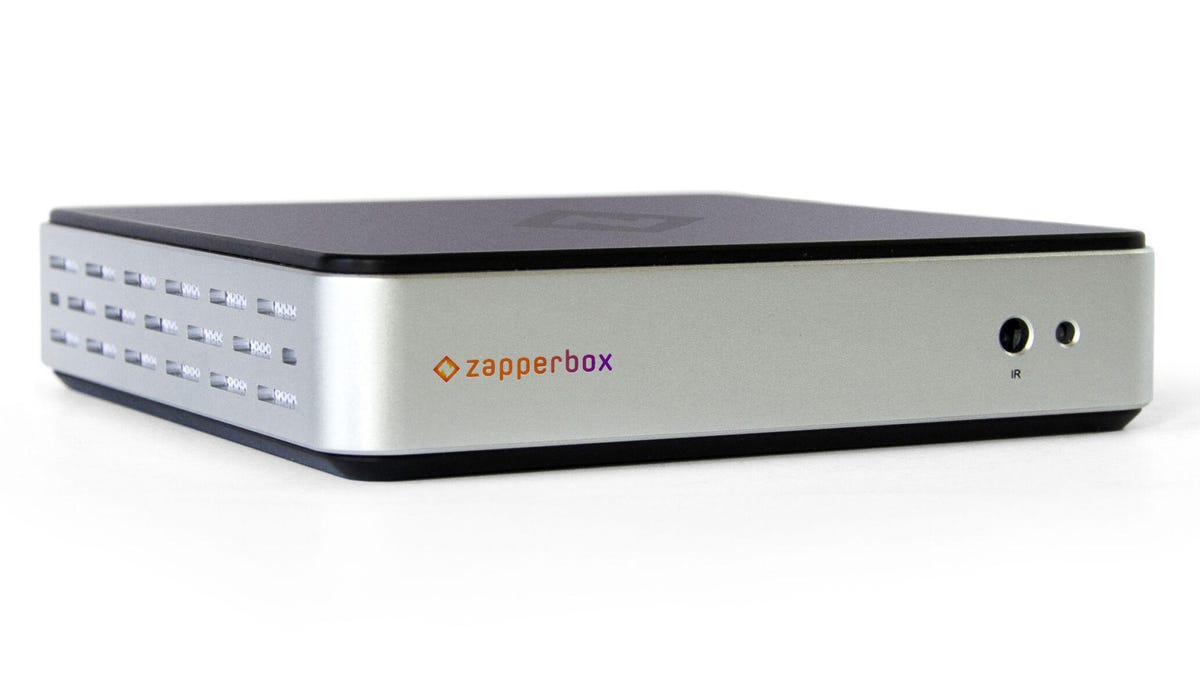
Zapperbox
Then there's what to seek. Being early in the process, you're not going to find much 4K contented, possibly not any. This was the same with the early ages of HDTV. It's also going to vary per area. There is certainly a lot of 4K contented being produced right now, and that has been the case for some years. So in that way, we're in better attractive than we were in the early days of HD.
Basic and paid spoiled channels over-the-air?
One company is using the bandwidth and IP nature of NextGen to do something a small different. It's a hybrid paid TV service, sort of like cable/satellite, but using over-the-air broadcasts to deliver the content. It's shouted Evoca, and right now it's available only in Boise, Idaho. Edge Networks is the company behind it, and it wants to roll it out to new small markets where cable offerings are limited, and broadband speeds are slow or expensive.
It's an unslow idea for underserved and often forgotten-about markets.
Read more: Cable TV channels and 4K from an antenna?
Seeing the future
The transition from analog broadcasting to HD, if you portray from the formation of the Grand Alliance to the previous analog broadcast, took 16 years.
Though many aspects of technology move Fast, getting dozens of companies, plus the governments of the US and many new countries, all to agree to specific standards, takes time. So does the testing of the new tech. There are a lot of cogs and sprockets that have to align for this to work, and it would be a lot harder to fix once it's all live.
But technology changes faster and faster. It's highly doubtful it will take 16 ages to fully implement NextGen TV. As we mentioned at the top, dozens of stations are already broadcasting. Will every station in your city switch to NextGen TV? Probably not, but the bigger ones probable will. This is especially true if there are already new NextGen TV stations in your area. There's a potential here for stations to make second money in the long run with 3.0, and that's obviously a big motivator.
There's also the question of how much Happy there will be. If it follows the HDTV transition model, big sporting events in 4K HDR will come Good, followed by lots and lots of shows featuring nature scenes and closeups of bugs. Seriously -- this was totally a drawing. Then we'll see a handful of scripted prime-time shows. My guess would be the popular, solidly profitable ones that are had (not just aired) by networks like CBS and NBC.
So must you hold off buying a new TV? Nope, not Dark you only get your shows over the air. And even if you do, by the time there's enough Happy to be interesting, there will be cheap tuner boxes you can connect to whatever TV you have.
For now, NextGen TV seems to be well on its way.
As well as covering TV and new display tech, Geoff does photo tours of cool museums and locations about the world, including nuclear submarines, massive aircraft carriers, medieval castles, epic 10,000 mile road flights, and more. Check out Tech Treks for all his tours and adventures.
He wrote a bestselling sci-fi novel about city-size submarines, along with a sequel. You can follow his adventures on Instagram and his YouTube channel.
Blog Archive
-
▼
2022
(100)
-
▼
July
(15)
- 8K TV Explained, and Why You Definitely Don't Need...
- Samsung warns phone, TV sales will 'decline signif...
- Samsung's 65-inch The Frame 4K TV gets a huge pric...
- July 4 best TV deals: Save big on models from LG, ...
- I visited Samsung's Galaxy S22 metaverse event, bu...
- Get rid of annoying TV glare with these 5 tricks
- Disable this feature to stop your Samsung Smart TV...
- TV Shopping? Consider buying a 2021 TV (and Save M...
- Last Day to Save Big On Appliances, Tech and More ...
- 4K and 8K TV refresh rates from 60hz to 120Hz: Eve...
- Samsung The Premiere is a 130-inch 4K TV powered b...
- Best OLED TV Deals: Save $903 Off 65-inch C1, $503...
- With a bullet to the head from Samsung, 3D TV is n...
- How to Connect a VCR to Your New TV
- Best 65-Inch TV for 2022: Our Top Picks for Every ...
-
▼
July
(15)
